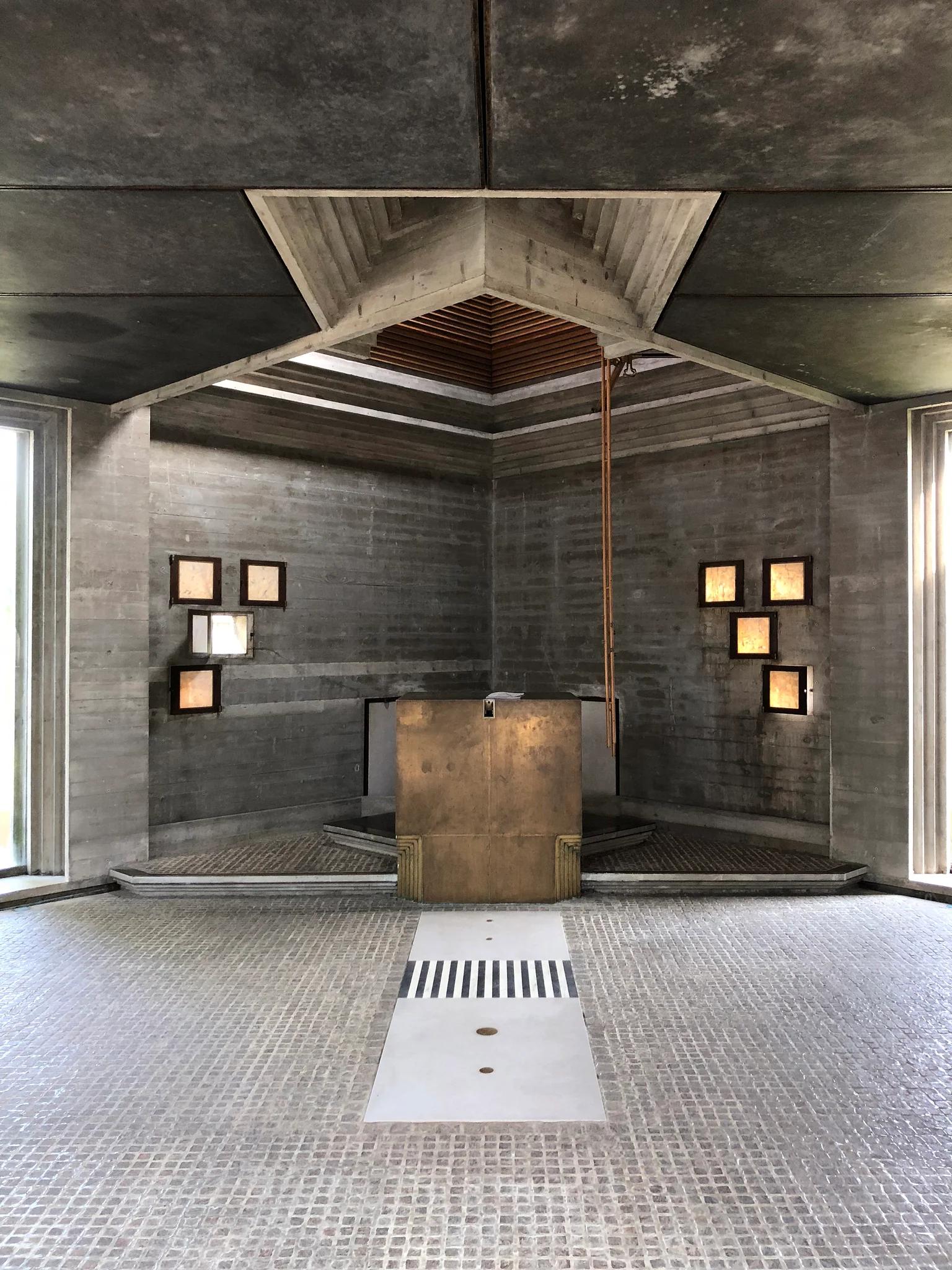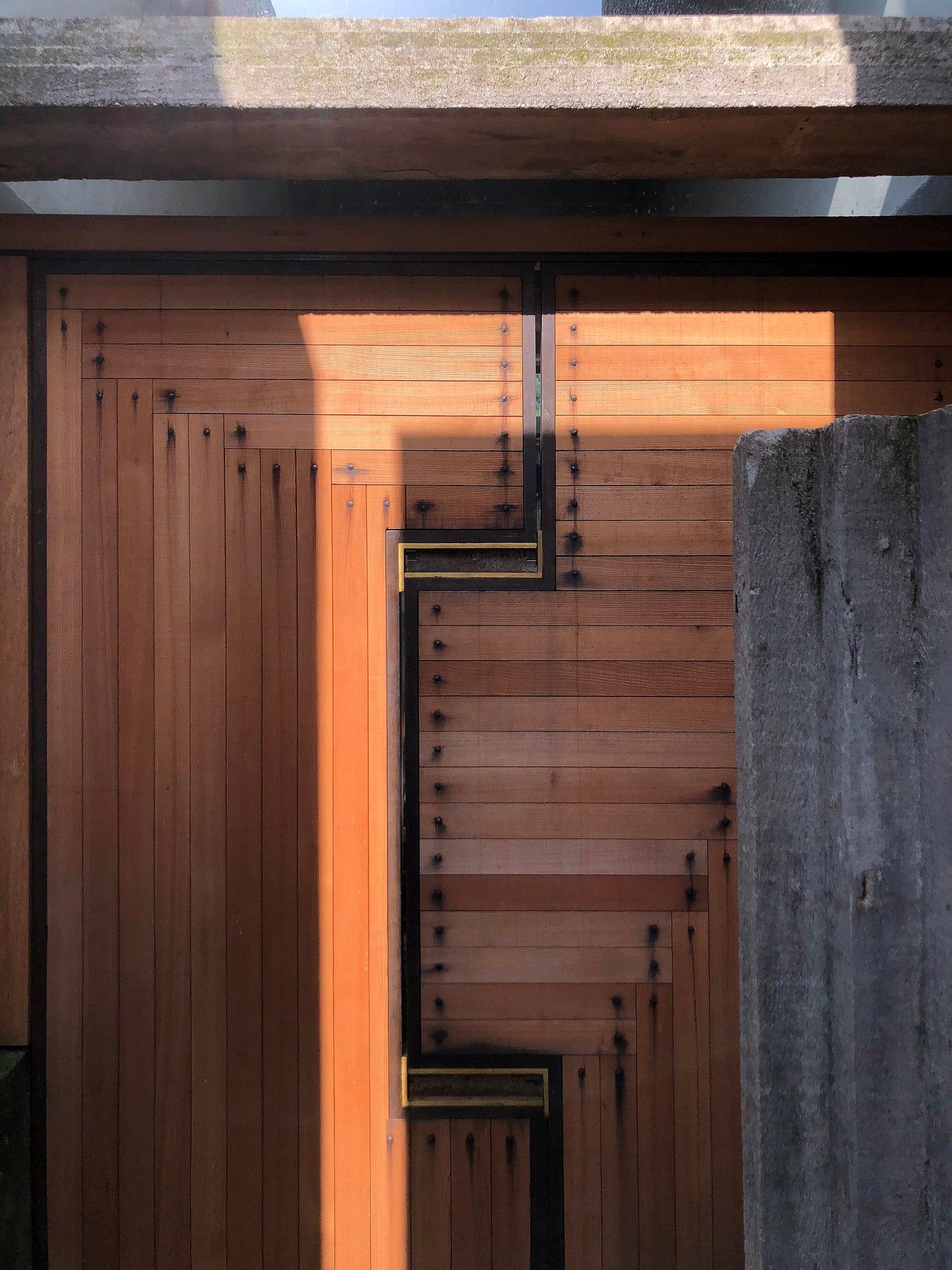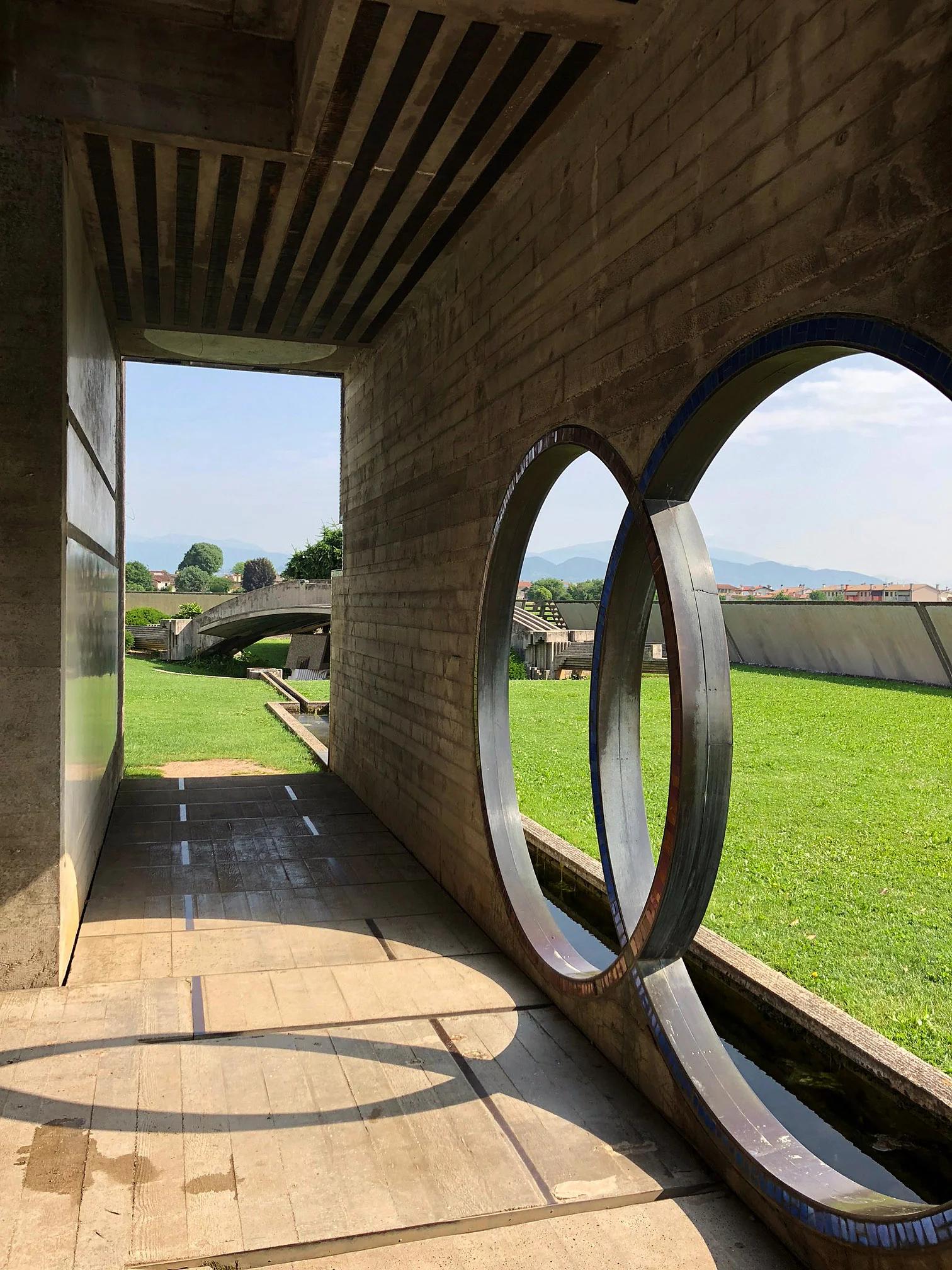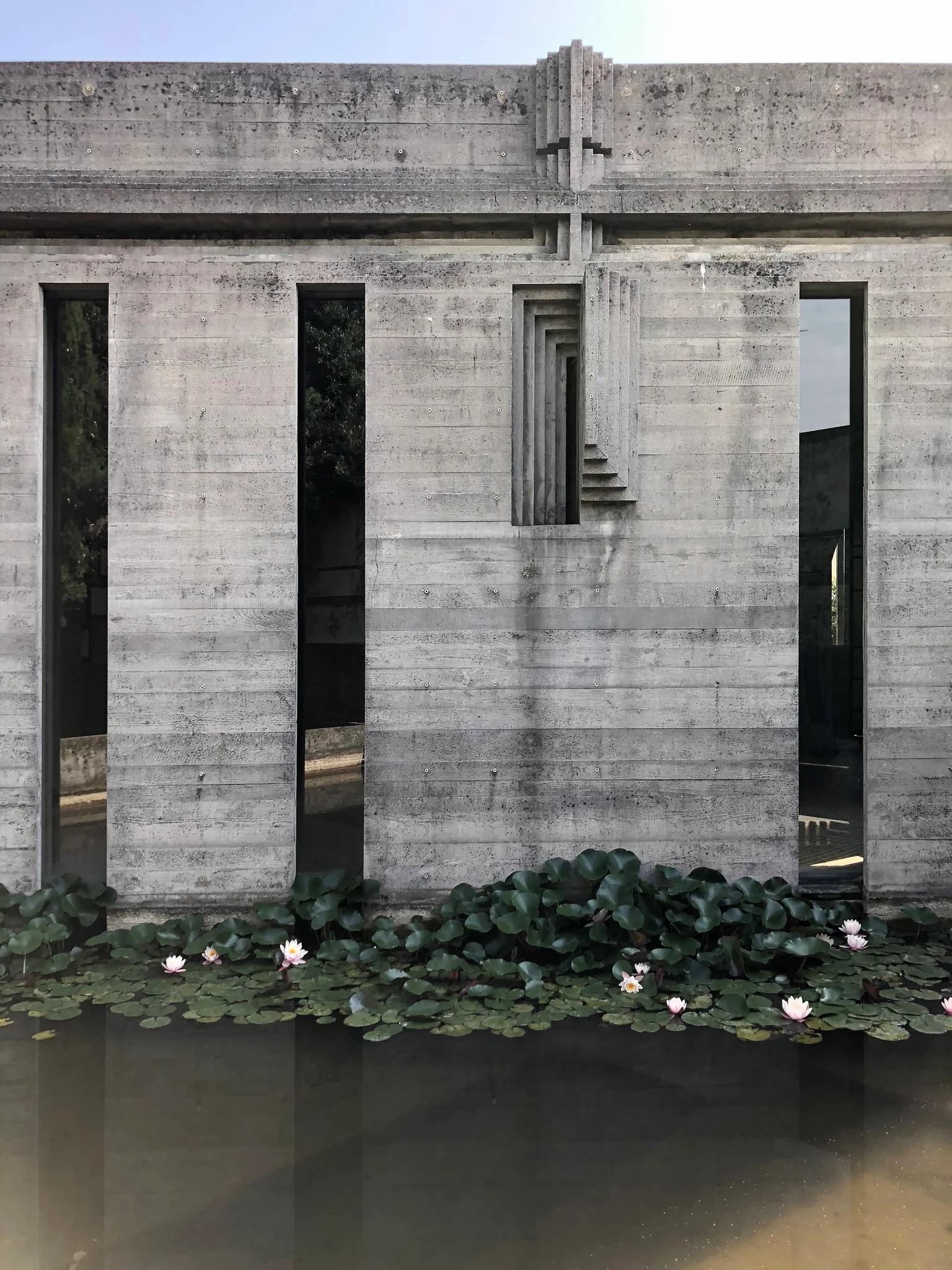ARMCHAIR TRAVELER JULY 21 2020
by Dung Ngo
Our resident wanderer, Dung Ngo, reflects on Carlo Scarpa’s Brion Cemetery from the comfort of his living room

THE ENTRANCE TO CARLO SCARPA'S TOMBA BRION IN VENETO
A few summers ago I had the opportunity to visit Marcel Breuer’s St. John’s Abbey Church (1961) in Collegeville, Minnesota. Located an hour west of Minneapolis in a small college town, the church is a concrete masterpiece, unknown but to a handful of the architecturally and religiously faithful. “It would be world famous,” I.M. Pei once said, “if it were built in New York instead of rural Minnesota.” Much the same can be said of the Brion Cemetery (1968-1978), set in the tiny Veneto village of Altivole, in the middle of nowhere really.
Italian architect Carlo Scarpa (1906-1978) was an enigma of the design world, a polymath who is as famous for his glass works for Venini as he is for his architectural interventions. Among Scarpa’s few dozen or so architectural projects, his two most well-known are the Olivetti showroom on San Marco Square in Venice and the adaptive restoration of the Castelvecchio in Verona into an art museum. The Brion Cemetery, however, is his masterpiece.

THE TOMBS OF ONORINA AND GIUSEPPE BRION
Commissioned by the family that started the famed Brionvega electronics company—think of Achille Castiglioni’s Radiofonograph or Richard Sapper and Marco Zanuso’s Cubo Radio—it is a private tomb and chapel attached to the village Altivole’s cemetery, where the Brion family came from. The main entrance is through a cast-in-place concrete portal, through which the leitmotif of two intertwining circles can be seen—representing the undying love between the two progenitors of the Brion clan. Off to one side is a private chapel used by the family for anniversary masses, while to the front is an open green lawn adjacent to a water lily pond. Opposite the pond is the tomb itself, a slightly subterranean space covered with an arched concrete structure that protects the two tombs from the rain.
Finding the cemetery is much easier these days thanks to Google Maps, although I was led to several other village cemeteries before I found it on my first visit. Surprisingly, it is always unlocked and always empty of tourists. Every visit has been a revelation: the materials, the mastery of details, and the sense of spirituality found only in the great chapels of Europe or temples of Japan. The cemetery is apparently closed currently for a restoration, but it should be on every design lover’s bucket list. Scarpa himself is buried there by his request, an acknowledgment that he considered it his magnum opus.◆

INSIDE THE PUBLIC CHAPEL 1/9

INSIDE THE PUBLIC CHAPEL 2/9

INSIDE THE PUBLIC CHAPEL 3/9

INSIDE THE PUBLIC CHAPEL 4/9

INSIDE THE PUBLIC CHAPEL 5/9

INSIDE THE PUBLIC CHAPEL 6/9

THE EXTERIOR OF THE PUBLIC CHAPEL 7/9

OVERLOOKING THE TOMBS 8/9

THE EXTERIOR OF THE PUBLIC CHAPEL 9/9
All images © Dung Ngo courtesy of AUGUST Journal